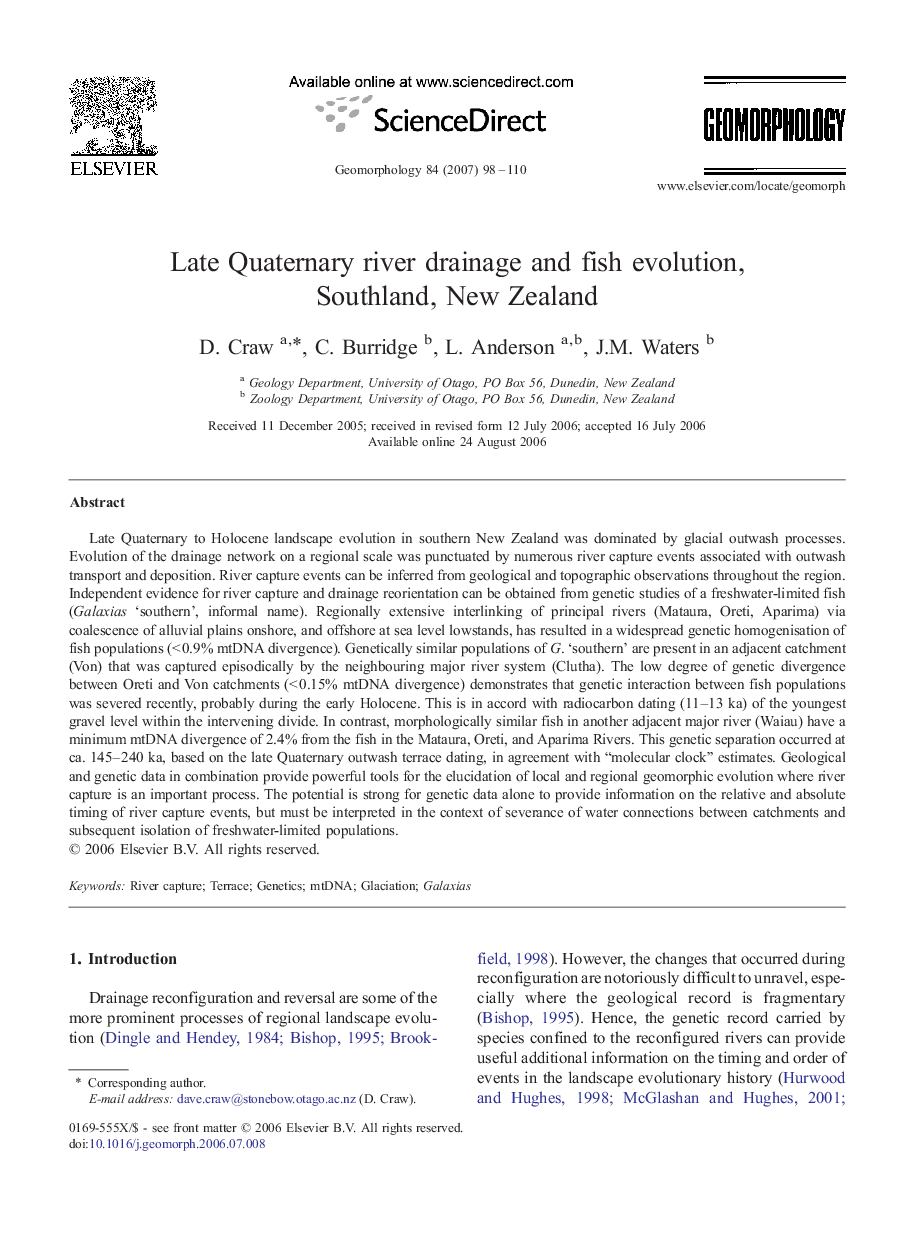| کد مقاله | کد نشریه | سال انتشار | مقاله انگلیسی | نسخه تمام متن |
|---|---|---|---|---|
| 4687450 | 1635584 | 2007 | 13 صفحه PDF | دانلود رایگان |
عنوان انگلیسی مقاله ISI
Late Quaternary river drainage and fish evolution, Southland, New Zealand
دانلود مقاله + سفارش ترجمه
دانلود مقاله ISI انگلیسی
رایگان برای ایرانیان
کلمات کلیدی
موضوعات مرتبط
مهندسی و علوم پایه
علوم زمین و سیارات
فرآیندهای سطح زمین
پیش نمایش صفحه اول مقاله

چکیده انگلیسی
Late Quaternary to Holocene landscape evolution in southern New Zealand was dominated by glacial outwash processes. Evolution of the drainage network on a regional scale was punctuated by numerous river capture events associated with outwash transport and deposition. River capture events can be inferred from geological and topographic observations throughout the region. Independent evidence for river capture and drainage reorientation can be obtained from genetic studies of a freshwater-limited fish (Galaxias 'southern', informal name). Regionally extensive interlinking of principal rivers (Mataura, Oreti, Aparima) via coalescence of alluvial plains onshore, and offshore at sea level lowstands, has resulted in a widespread genetic homogenisation of fish populations (<Â 0.9% mtDNA divergence). Genetically similar populations of G. 'southern' are present in an adjacent catchment (Von) that was captured episodically by the neighbouring major river system (Clutha). The low degree of genetic divergence between Oreti and Von catchments (<Â 0.15% mtDNA divergence) demonstrates that genetic interaction between fish populations was severed recently, probably during the early Holocene. This is in accord with radiocarbon dating (11-13Â ka) of the youngest gravel level within the intervening divide. In contrast, morphologically similar fish in another adjacent major river (Waiau) have a minimum mtDNA divergence of 2.4% from the fish in the Mataura, Oreti, and Aparima Rivers. This genetic separation occurred at ca. 145-240Â ka, based on the late Quaternary outwash terrace dating, in agreement with “molecular clock” estimates. Geological and genetic data in combination provide powerful tools for the elucidation of local and regional geomorphic evolution where river capture is an important process. The potential is strong for genetic data alone to provide information on the relative and absolute timing of river capture events, but must be interpreted in the context of severance of water connections between catchments and subsequent isolation of freshwater-limited populations.
ناشر
Database: Elsevier - ScienceDirect (ساینس دایرکت)
Journal: Geomorphology - Volume 84, Issues 1â2, 15 February 2007, Pages 98-110
Journal: Geomorphology - Volume 84, Issues 1â2, 15 February 2007, Pages 98-110
نویسندگان
D. Craw, C. Burridge, L. Anderson, J.M. Waters,